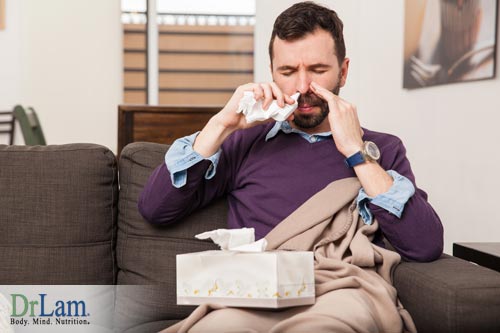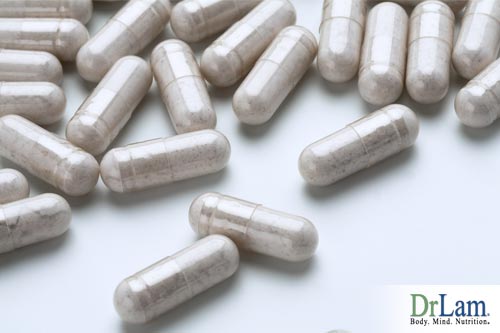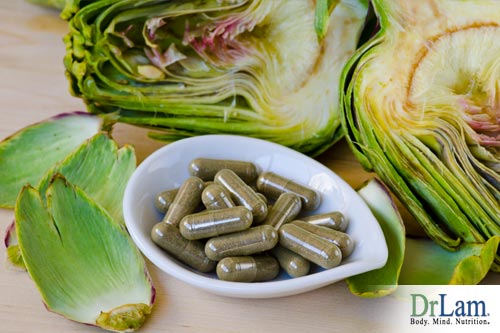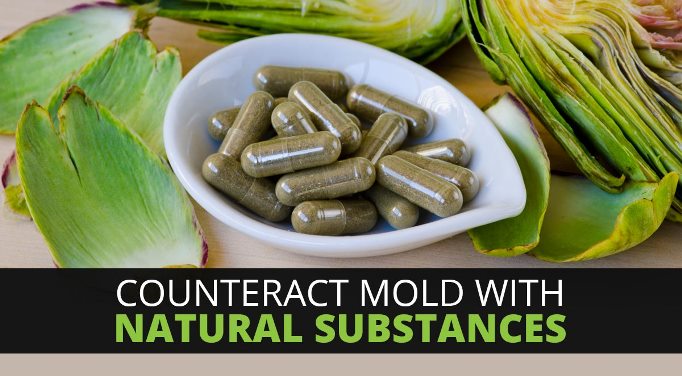 It is difficult to address the conditions caused by mold exposure symptoms. The multiple symptoms of mold exposure, and the many conditions that may result from it, make remediation of these conditions much more difficult. Combine this with the fact that many traditionally trained physicians aren’t fully aware of the multitude of illnesses caused by mold exposure, and the difficulty increases tremendously.
It is difficult to address the conditions caused by mold exposure symptoms. The multiple symptoms of mold exposure, and the many conditions that may result from it, make remediation of these conditions much more difficult. Combine this with the fact that many traditionally trained physicians aren’t fully aware of the multitude of illnesses caused by mold exposure, and the difficulty increases tremendously.
Often, physicians faced with symptoms and conditions related to mold exposure will simply address the symptoms with which they’re familiar.
Many of the symptoms initially presented to physicians may be related to irritation of the sinuses. Traditional remedies for this include nasal steroid inhalers. While these may bring temporary relief because of short-term decrease of inflammation, they also suppress the immune system. This leaves you open to illness and other symptoms of mold exposure.
Infection can actually be encouraged, between a steroid-compromised immune system and immune suppression due to mold exposure. Some steroid medications may actually help infections spread to other parts of the body, when they otherwise would be isolated to only one area. This mechanism increases mycotoxins’ effects on the entire body.
Many physicians act as though any infection in the sinus is bacterial in origin and recommend antibiotics to deal with mold exposure symptoms. Research suggests as many as 90% of sinus infections may be fungal in nature instead. Antibiotics, which are oriented to bacteria, then set up your gut system for a massive fungal infection. These medications kill not only any harmful bacteria, but also the beneficial bacteria in your gut. This includes those that would ordinarily keep fungi at bay. This allows molds to grow unchecked, leading to increased inflammation and opportunistic infections.
When the first round of antibiotics are ineffective in remedying an infection, physicians often try another, more potent antibiotic. Results will likely be the same, with even more of the beneficial bacteria in the gut killed, increasing the likelihood of sickness.
This sets up a vicious cycle of feeling ill, taking medications that don’t work, getting frustrated, and becoming depressed. Depression can come due to feeling sick and nothing seeming to help. This situation may lead physicians to suggest antidepressant medications for mold exposure symptoms.
In addition, mycotoxins have an effect on the brain and nervous system and can worsen feelings of depression. Fungal toxins affect the brain and thus the emotions.
 Many situations in which you may be exposed to mold and mycotoxins also occur in traumatic conditions. Floods, earthquakes, hurricanes, and tornados often lead to perfect conditions for mold to grow and flourish. All of these traumatic situations may bring on associated depression and anxiety.
Many situations in which you may be exposed to mold and mycotoxins also occur in traumatic conditions. Floods, earthquakes, hurricanes, and tornados often lead to perfect conditions for mold to grow and flourish. All of these traumatic situations may bring on associated depression and anxiety.
When medications don’t seem to alleviate your symptoms, your physician may begin believing it’s all in your head. If your symptoms, including depression and anxiety, are caused by your exposure to mold, antidepressants will not touch them. They won’t remedy your psychological symptoms nor your physical ones.
Potent antifungal medications can have serious side-effects on your liver. Even an antifungal commonly used for toenail fungus carries a warning that it could cause liver failure.
Most antifungal medications are highly toxic because there is a great deal of similarity between your cell membranes and the cell membranes of fungus. When the antifungal medications attack the fungi cell membranes, they attack your cell membranes as well.
Because of the whole-body effects of mold exposure, a comprehensive, natural approach is often the best way to deal with symptoms. This works to address the cause, and not only the symptoms. Nutritional and detoxification interventions must be utilized.
The first and sometimes most effective approach is to stay away from buildings and materials that contain mold spores and mycotoxins. You may want to invest in an air purification system. Many mold spores are airborne and can be inhaled. This can sometimes alleviate mild symptoms of mold exposure. However, simply avoiding contaminated areas may not be sufficient for all people who are ill from mycotoxins.
Symptoms sometimes persist after removal of the mold or moving away from contaminated buildings. Length of exposure, genetic factors, and severity of symptoms may require a longer-term program of nutrition and antioxidant support.
One approach to dealing with mold exposure symptoms and mycotoxins is to cut off its food supply. Sugars, grains, and simple carbohydrates are foods that mold fungi thrive on. Eliminating foods that contain these nutrients will go a long way toward eliminating your symptoms. This means cutting out milk, bread, pasta, and refined white flour products, among others.
Sugar products especially enable fungi to thrive. Sucrose, lactose, and other sugars must be carved out of your diet. Sugar itself has been shown to suppress your immune system.
Other foods, especially grains, need to be avoided because of the possibility of mold cross-contamination from them. They have a tendency to harbor mold spores, and may introduce more mycotoxins into your system if you ingest them. It may only take a small exposure to these foods to trigger more symptoms because your body has become sensitized to the effects of molds and mycotoxins.
 One of the best supplements for fighting the symptoms of mold exposure and mycotoxins is a very good probiotic.
One of the best supplements for fighting the symptoms of mold exposure and mycotoxins is a very good probiotic.
When you use antibiotics, they kill off all the microflora in your gut. Since your gut is your best line of defense against mold and mycotoxins, you need it to be as healthy as possible. Probiotics assist your gut in building “good” microflora to keep the “bad” microflora in check. This includes inhibiting mold and mycotoxins.
If your gut isn’t in good shape, perhaps due to the effects of AFS in addition to mold exposure, the fungi and associated mycotoxins can invade the walls of your gut, gaining entrance into your bloodstream and traveling throughout your body, infecting other systems as well.
If this happens, your immune system will go into full alert, fighting against this invasion and leading to increased inflammation. When the organs involved in detoxifying your body are infected, it reduces their ability to cleanse your system of toxic substances. This leads to multisystem infection, which is what usually happens with mold exposure.
This makes it extremely important for you to use a good probiotic to strengthen your gut and begin the process of ridding your body of mycotoxins.
As with most supplements, probiotics carry some possible side effects.
Mycotoxins have an oxidative effect and deplete the body of antioxidants. This makes it important to add powerful antioxidants to your diet. Glutathione is possibly the most effective antioxidant. Not only does it rid the body of free radicals, it also enhances the effects of other antioxidants. This makes it an excellent choice of antioxidants to add to your supplements. Whey protein may be one of the better ways to add glutathione to your diet. High quality whey protein should be cold pressed, denatured, and come from cows that have no additives in their food sources.
Omega-3 fats are also helpful. One of the best sources of these vital fats is krill oil. Some side effects have been noted with Omega-3s. Fast heartbeat and dizziness have been reported, but overall incidence isn’t known. More common side effects include diarrhea, headache, nausea, joint pain, and unusual tiredness or weakness.
Artichoke leaf extract has been shown through research to be toxic to a lot of fungi, both molds and yeasts.
Research has also shown Vitamin D to prevent mold exposure symptoms.
 Pregnenolone is often recommended to support adrenals stressed due to exposure to mold and mycotoxins. It is the hormone that is a precursor for many of the other hormones in the body, including cortisol. Pregnenolone is considered generally safe for adult usage, but there are some side effects you should be aware of. It may bring on some effects that are similar to steroids. Overstimulation, insomnia, irritability, anger, anxiety, and negative moods are a few of the side effects. The weaker your body, the bigger the risks. Pregnant and breastfeeding women should not use pregnenolone since little is known of its side effects in this population. Pregnenolone can be converted to estrogen in the body, leading to estrogen dominance in some people.
Pregnenolone is often recommended to support adrenals stressed due to exposure to mold and mycotoxins. It is the hormone that is a precursor for many of the other hormones in the body, including cortisol. Pregnenolone is considered generally safe for adult usage, but there are some side effects you should be aware of. It may bring on some effects that are similar to steroids. Overstimulation, insomnia, irritability, anger, anxiety, and negative moods are a few of the side effects. The weaker your body, the bigger the risks. Pregnant and breastfeeding women should not use pregnenolone since little is known of its side effects in this population. Pregnenolone can be converted to estrogen in the body, leading to estrogen dominance in some people.
Whenever you decide to use nutrition and natural substances to handle mold exposure symptoms, be sure to find a qualified practitioner to guide you. Someone who is familiar with natural remedies will be able to suggest appropriate nutrients for you and will help you become aware of any effects that may not be beneficial for you.
Exposure to mold and the mycotoxins they may harbor is becoming almost an epidemic in the U.S. One source reported almost 25% of the buildings in the country to be water damaged and likely to have mold growing in them. Sometimes mold is not evident to general observation. If you have symptoms of mold exposure, be sure to consult your healthcare professional and begin rebalancing your body. The health conditions that can come from mold exposure symptoms are much too serious to ignore.
© Copyright 2017 Michael Lam, M.D. All Rights Reserved.

